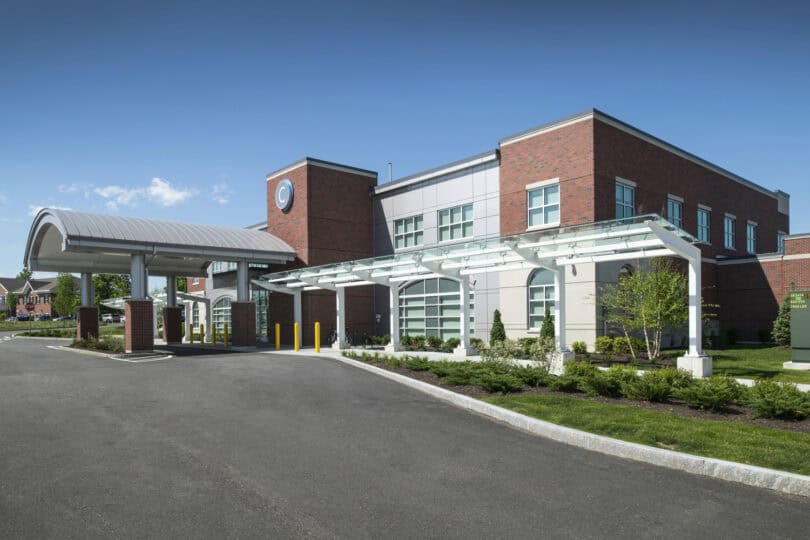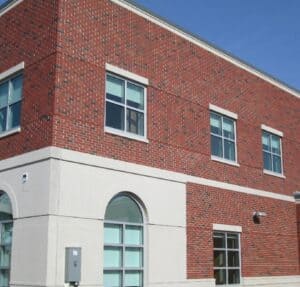Advertorial
Portsmouth, NH – Two new structures for Wentworth-Douglass Hospital’s Outpatient Center in Portsmouth now provide healthcare services for those on the seacoast.
After outgrowing its facilities, the need for an outpatient center in Portsmouth was clear. The new Medical Office Building (MOB) provides custom space for interdisciplinary physician groups and is more sustainable, more convenient, more digital and more architecturally pleasing.
Building C is a two-story, 25,000sf building that was completed in the summer of 2019. The larger three-story, 60,000sf Building A opened to patients in January 2020. Specialized care, cutting-edge diagnostics and other comprehensive health care services are offered in the new MOBs.
The supplemental space to the hospital campus features architectural precast, aluminum and glass storefronts, and their signature barrel roof above the main entrances.
Precast concrete was specifically selected by the hospital to meet their accelerated schedule and avoid the time, mobilization and scaffolding typical of masonry construction. Off-site manufacturing was key to speed of construction of the two MOBs especially over New England winter months.
A common misconception with precast is that it’s more expensive than other construction types or materials. “I think that it is very cost competitive when you look at the entire project; with the time savings and faster mobilization it really is comparable,” says Ray Boudreau, project manager, E4H Architecture, Boston.
Coreslab Structures (CONN) Inc. designed and fabricated the architectural precast concrete featuring inlaid thin brick with a light acid-etch finish both in the joints and exposed surfaces of the panels. The thin-brick was a special blend of four colors to match the palette of the existing medical campus. Precast concrete sills were cast monolithically in the panels. “The darker brick matched the color and characteristics which is a standard at Wentworth Douglass,” describes Boudreau.
Working on an operational medical campus is always a challenge. Precast concrete like other pre-fabricated systems help limit site disruption. The precast cladding for both buildings was installed in just months allowing for other trades to follow behind for the scheduled fit-out.
“One of the biggest factors that helped our schedule was getting the structural engineer on board early to perform pre-calculations and the basis of design for precast construction,” says Boudreau.
Foley Buhl Roberts & Associates detailed all the connections and provided preemptive calculations to speed up the shop drawing process. Early design of precast connections sped up that portion of the project and eliminated questions during the review process of shop drawings. We turned the shop drawings around quickly which was a real time saver,” recalls Boudreau.
“A massive amount of concrete was used to surround the linear accelerator for cancer treatment inside,” describes Boudreau. “We consulted a physicist for the containment of radiation in that specific area.” The vault required more than one million pounds of concrete to shield that area.
The hospital’s strategic plan outlined how to grow this campus, and Wentworth Douglass proceeded with accelerated delivery of the two freestanding medical office buildings. The precast concrete facade contributes to the seamless patient experience within the medical complex.
Read the full project profile at www.pcine.org.












